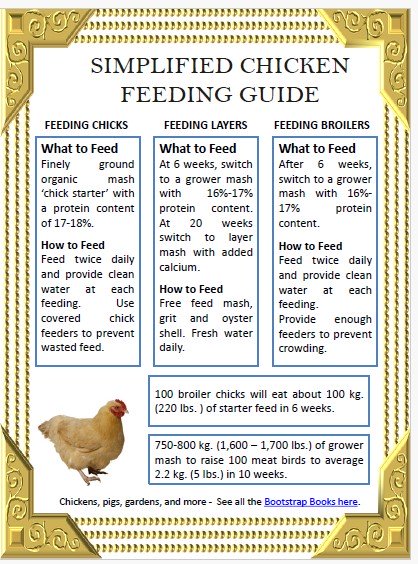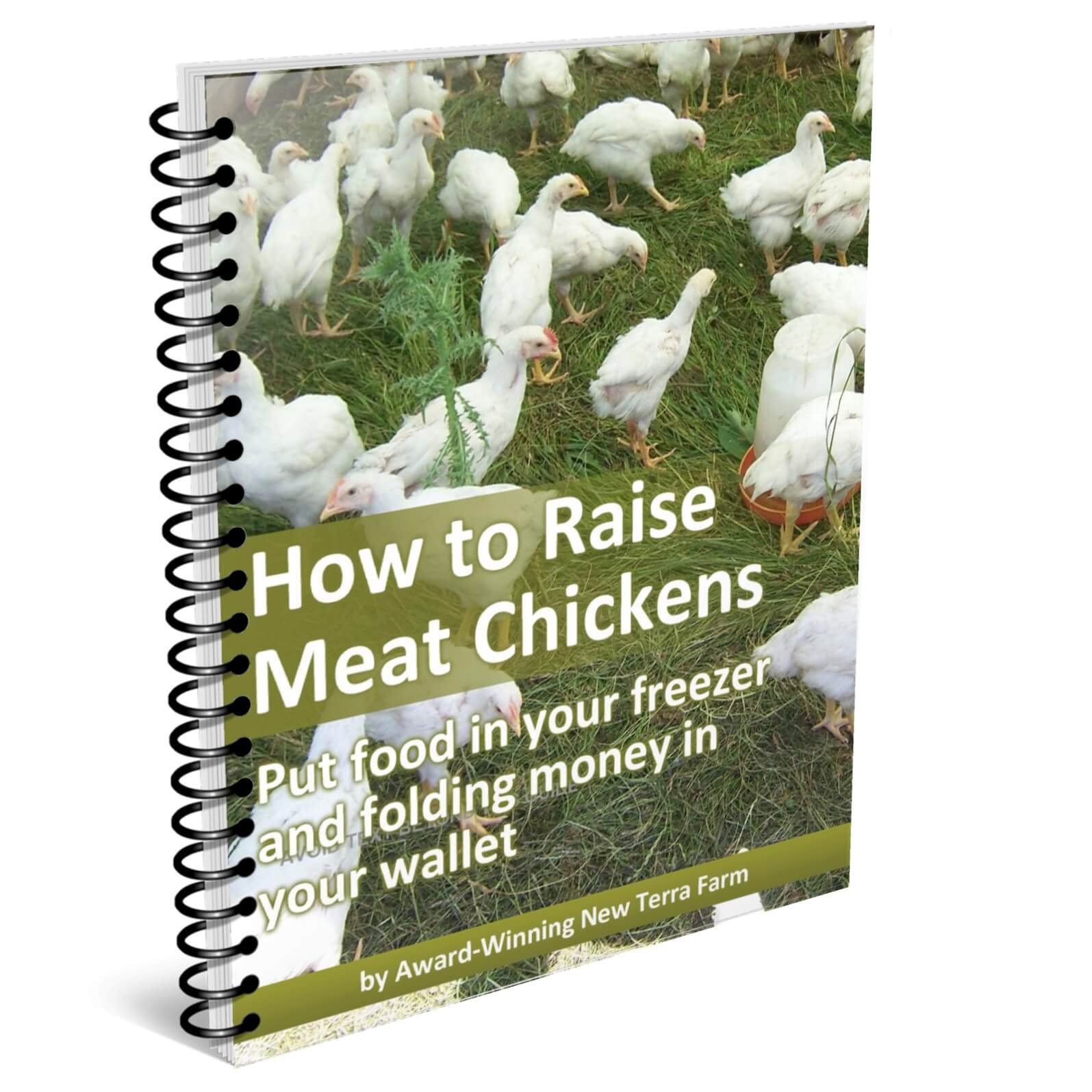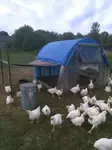Organic chicken farming is a great small farm businessOrganic chicken farming can be a profitable business for a small farm. Raising meat birds organically, on pasture, is both environmentally sound and animal-friendly.
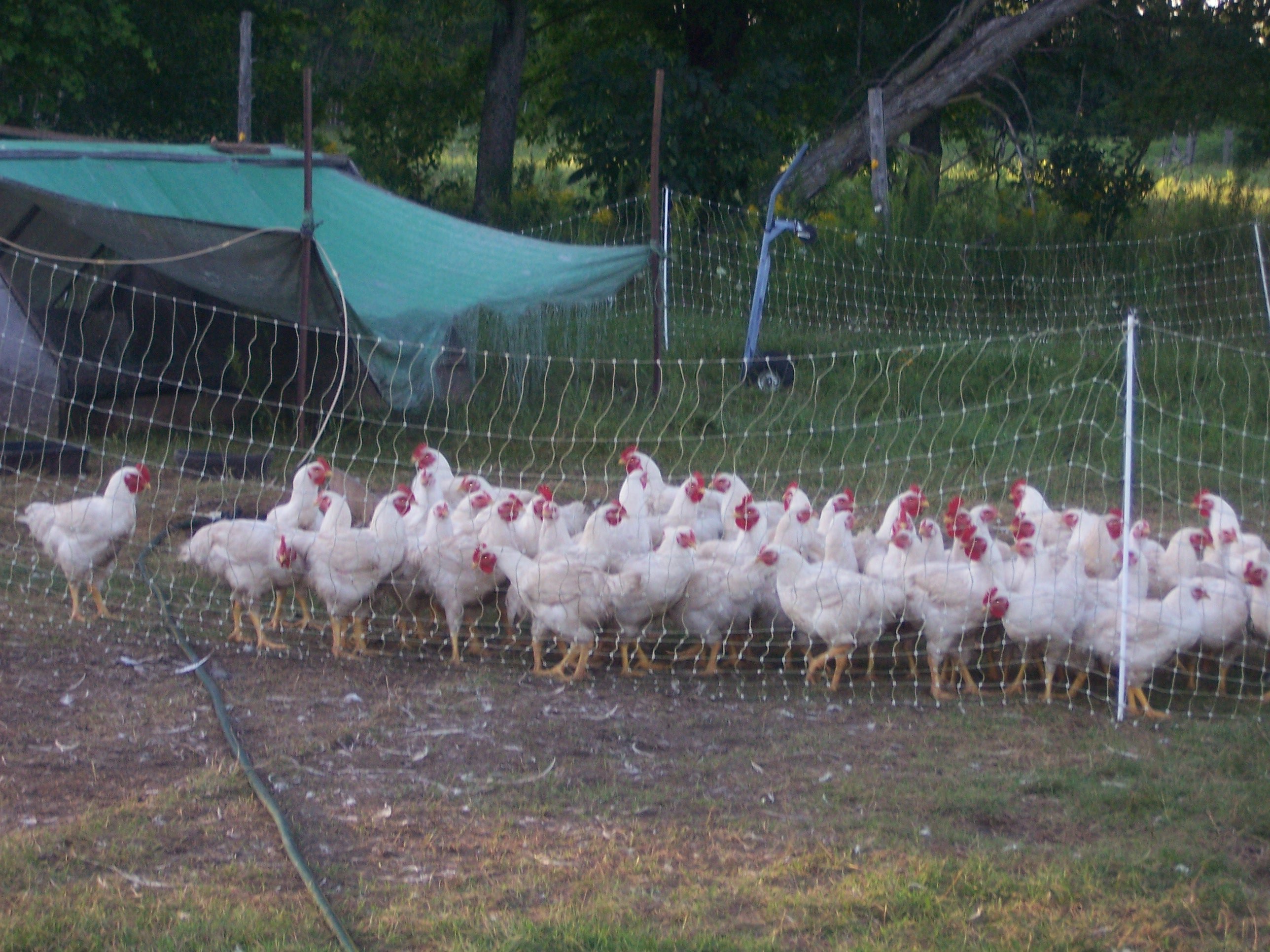 Organic chicken farming on pasture is sustainable and profitable Organic chicken farming on pasture is sustainable and profitable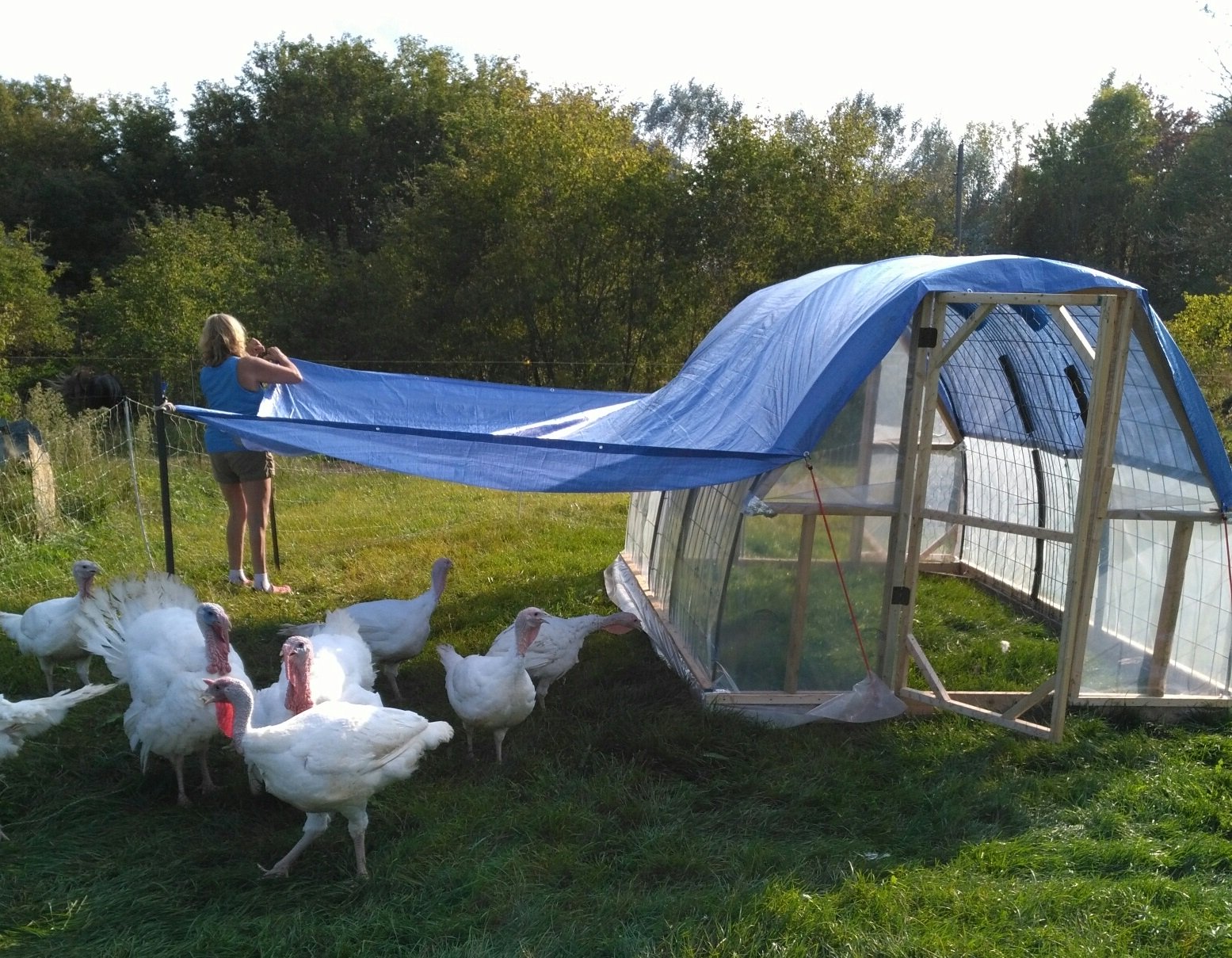 We built a small fleet of these hoop coops for our meat chickens and turkeys We built a small fleet of these hoop coops for our meat chickens and turkeysThe advantages of organic chicken as a livestock animal for your small farm are many:
Organic chicken farming on a larger scale
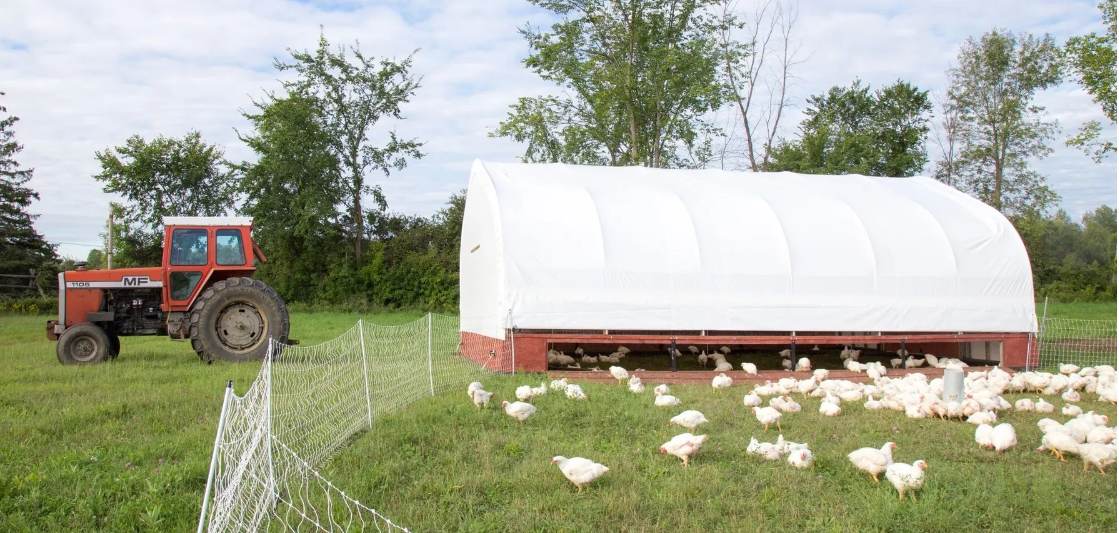 Merrifield Farms built a movable shelter for their birds Merrifield Farms built a movable shelter for their birdsIn the picture above, you can see another approach to organic chicken farming. My friends Ryan and Monica at Merrifield Farm in Jasper, Ontario raise grass-fed organic chicken using a large movable shelter and electric mesh fencing to provide a chicken yard. They raise several thousand birds a year. You can see more about Merrifield Farms here The key to successful (i.e. profitable) organic chicken farming is minimizing your losses. You need to get at least 95% of the chicks you start with to market. This means you need to properly care for the little chicks by keeping them warm, dry and adequately nourished. And you need to keep the big birds on pasture safe from predators.
We use portable coops and electric mesh fencing to create temporary pens, which we move regularly. When done right, organic chicken farming can actually improve your fields and gardens. Free Report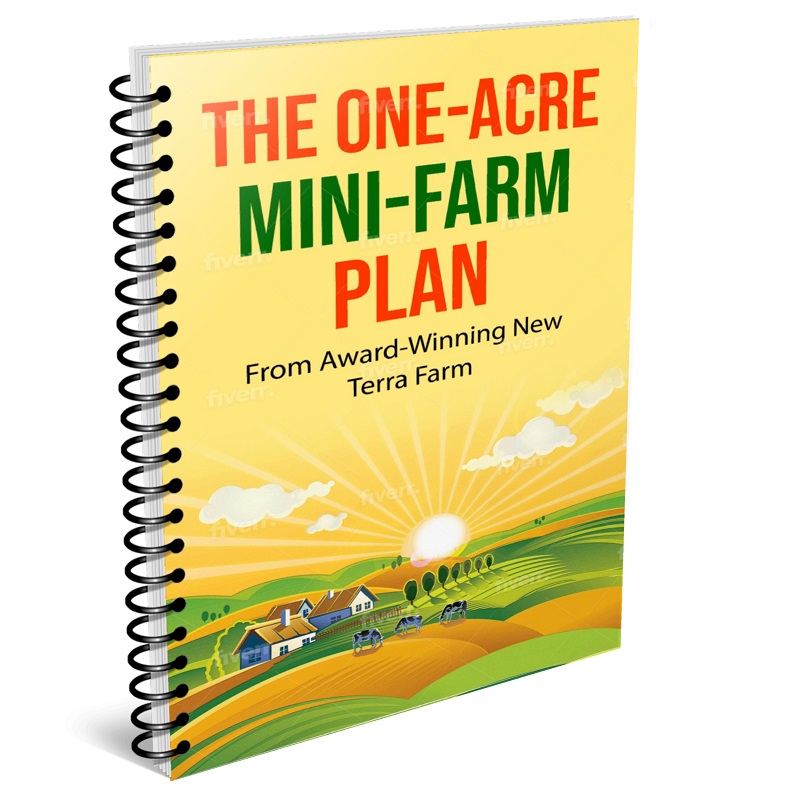 Get my FREE One-Acre Farm Plan and learn how to raise pigs, chickens and more, integrated with an organic market garden, to
make more money from your small property. Enter your best email and the Guide will be sent to you right away. The Grand-Daddy of Organic Chicken Farming - Joel Salatin
I don't know if he invented the 'chicken tractor', but Joel Salatin of Polyface Farms certainly made the most of the idea. He and his family raise thousands of birds a year on pasture in movable chicken pens i.e. chicken tractors. Joel has a fleet of that are moved to fresh ground on a daily basis. The result is healthy, happy birds and steadily-improving pasture 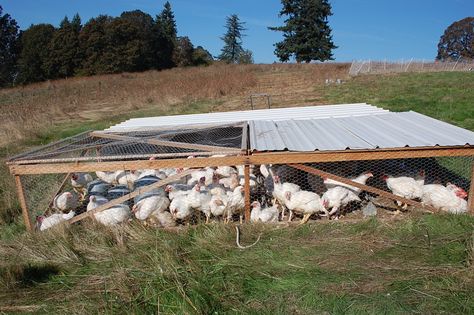 The Salatin chicken tractor The Salatin chicken tractorResources for 'Organic Chicken Farming'For the last 20 years or so, we have raising all our meat chickens and turkeys on pasture. This is the latest edition of How to Raise Meat Chickens, now with TWO bonus chicken coop plans:
Get 'How to Raise Meat Chickens' and start planning your own pastured flock. More Resources for the Small GrowerSave 15% on a selection of farm and garden supplies. Read my Garvee review here CSA farms have the highest net income of all market garden models. Bootstrap Market Gardening shows you how to launch one of your own. The Self-Sufficient Backyard. Chapter 14 - Chicken Processing . Read my review of this valuable resource here. Learn to grow food like you have to - BEFORE you have to: The Bootstrap Survival Garden Best Survival Food Supplier: Survival Frog. Read my review here. If you can find 50 sq ft you can have fresh eggs for breakfast (and maybe barter): The Eggs Factory. Read my review here.
|
- Home
- Raise Meat Chickens
- Organic Chicken Farming
See Something You Like? Share!
Questions, comments, stories to tell about raising chickens for meat?
Share your question, or comment, or story about raising meat chickens.
Recent Articles
-
Farm grown reviews of products recommended by New Terra Farm
Dec 04, 25 06:26 AM
Find great farm and garden products in my farm grown reviews -
Best Chicken Coop and Accessories for Small Farms and Homesteads
Nov 30, 25 09:18 AM
Looking for the best chicken coop? Here are the top coops, accessories, nest boxes, and gear to build a safe, productive poultry setup. -
Community Supported Agriculture Marketing Ideas To Sell Out The Season
Nov 05, 25 05:18 AM
Authentic Community Supported Agriculture marketing ideas to grow loyalty, boost sign-ups, and sell out your CSA every year
